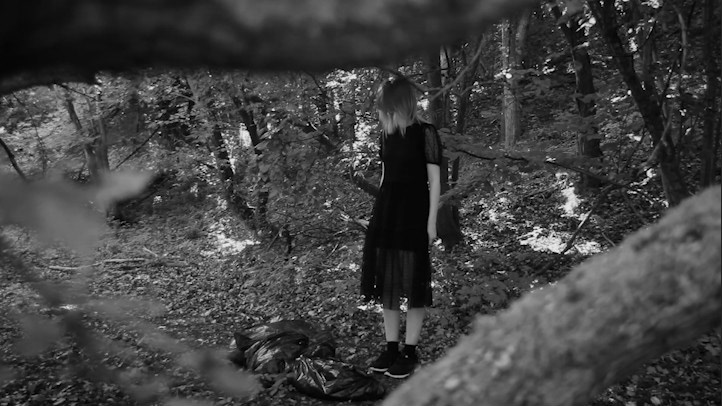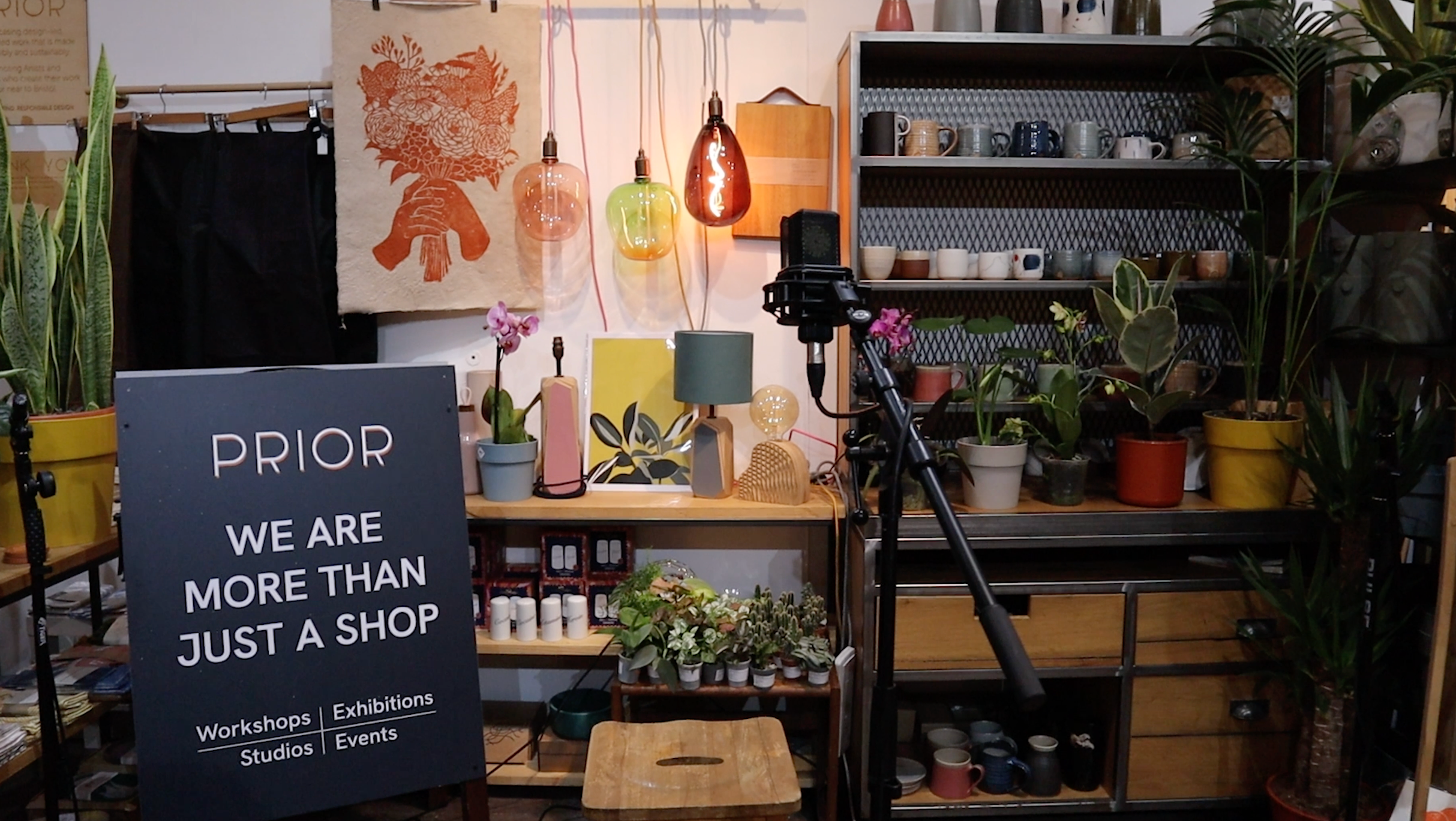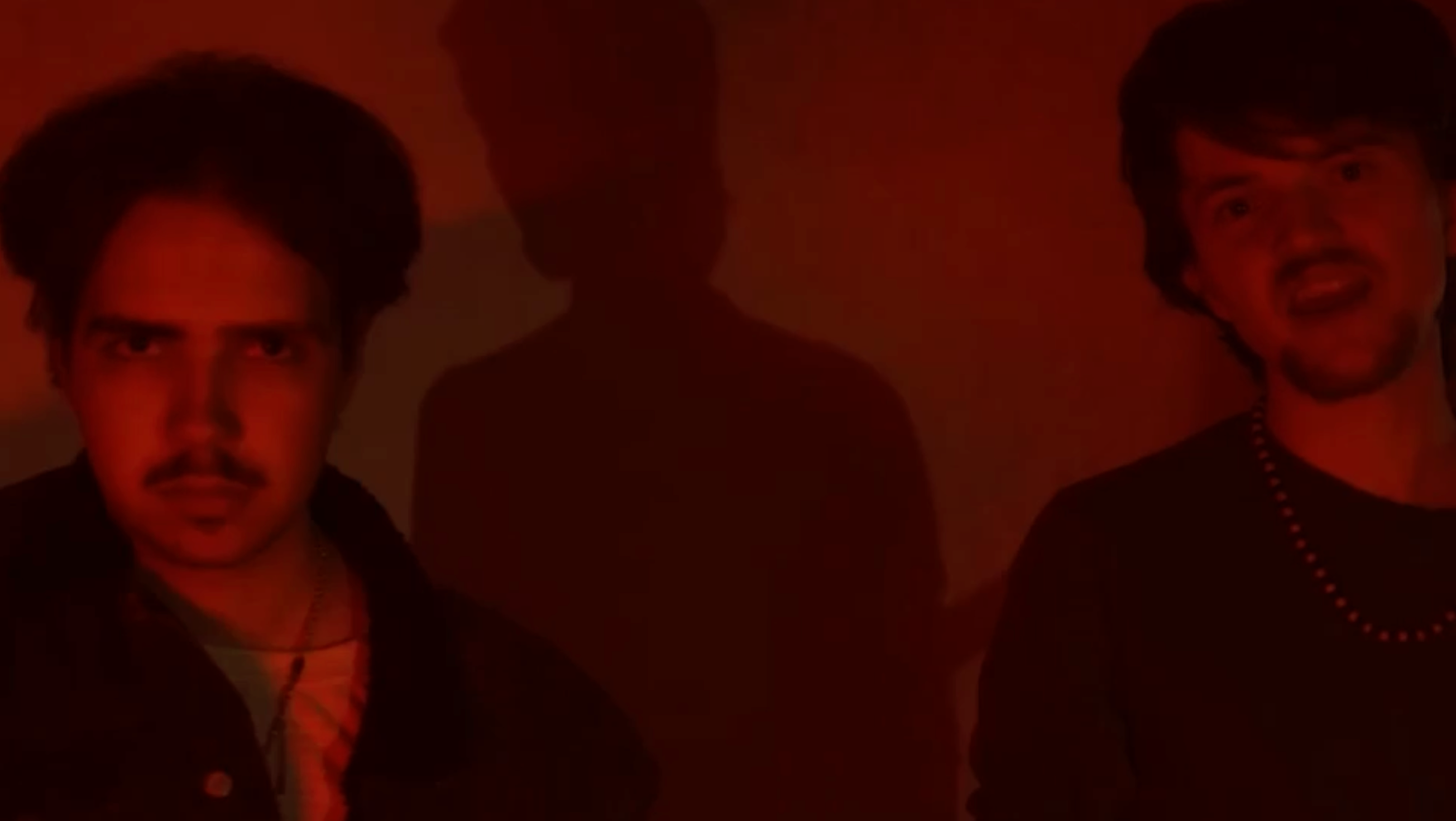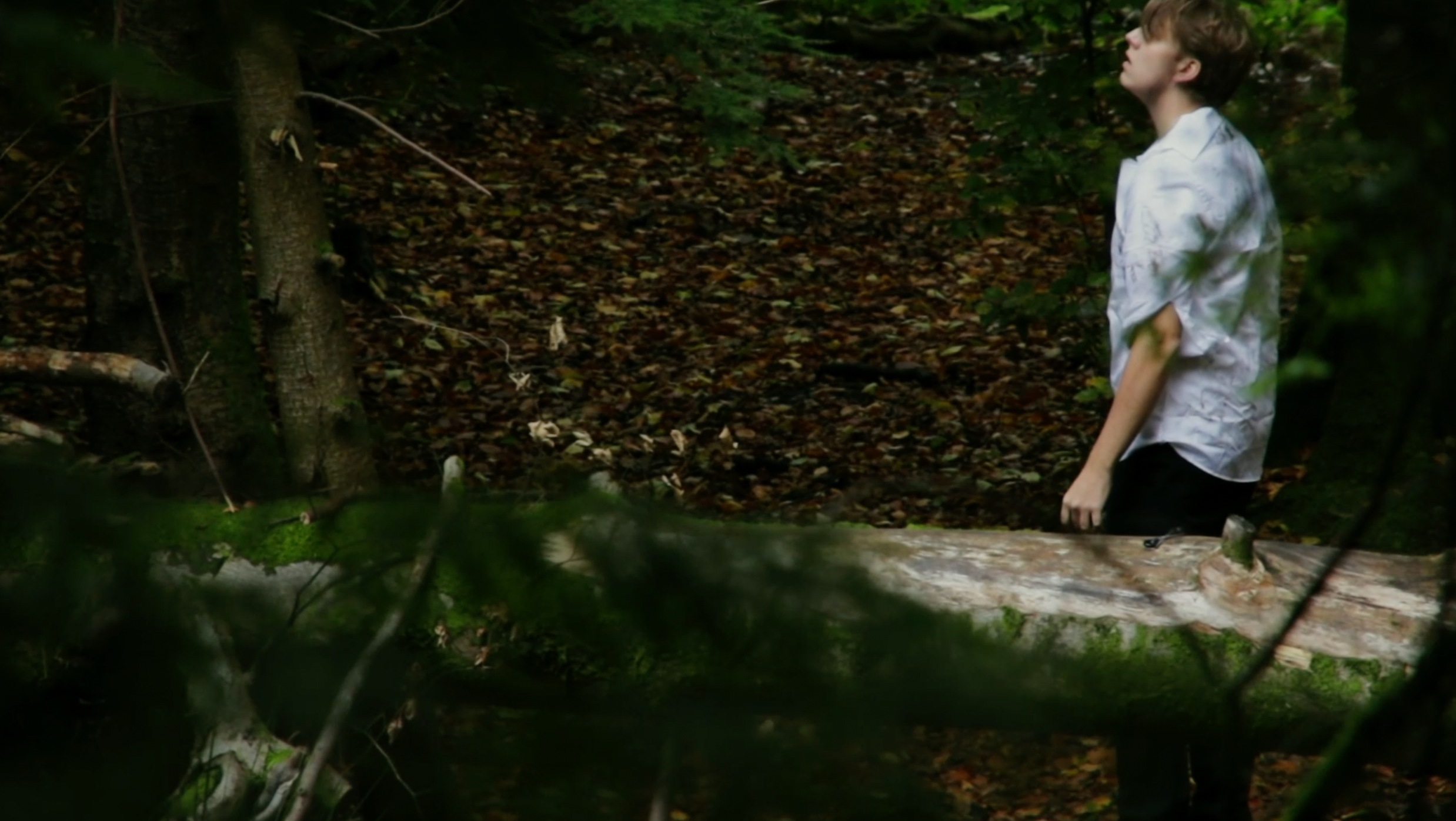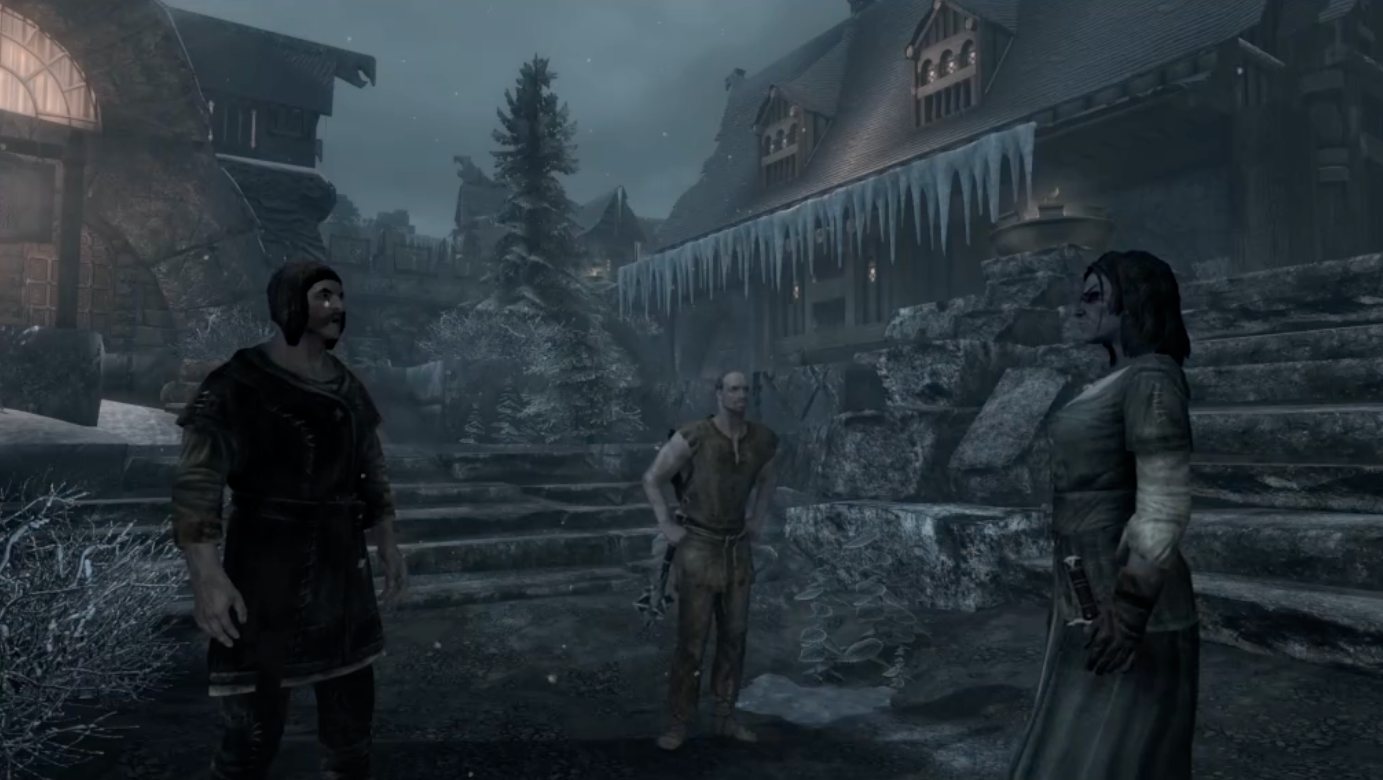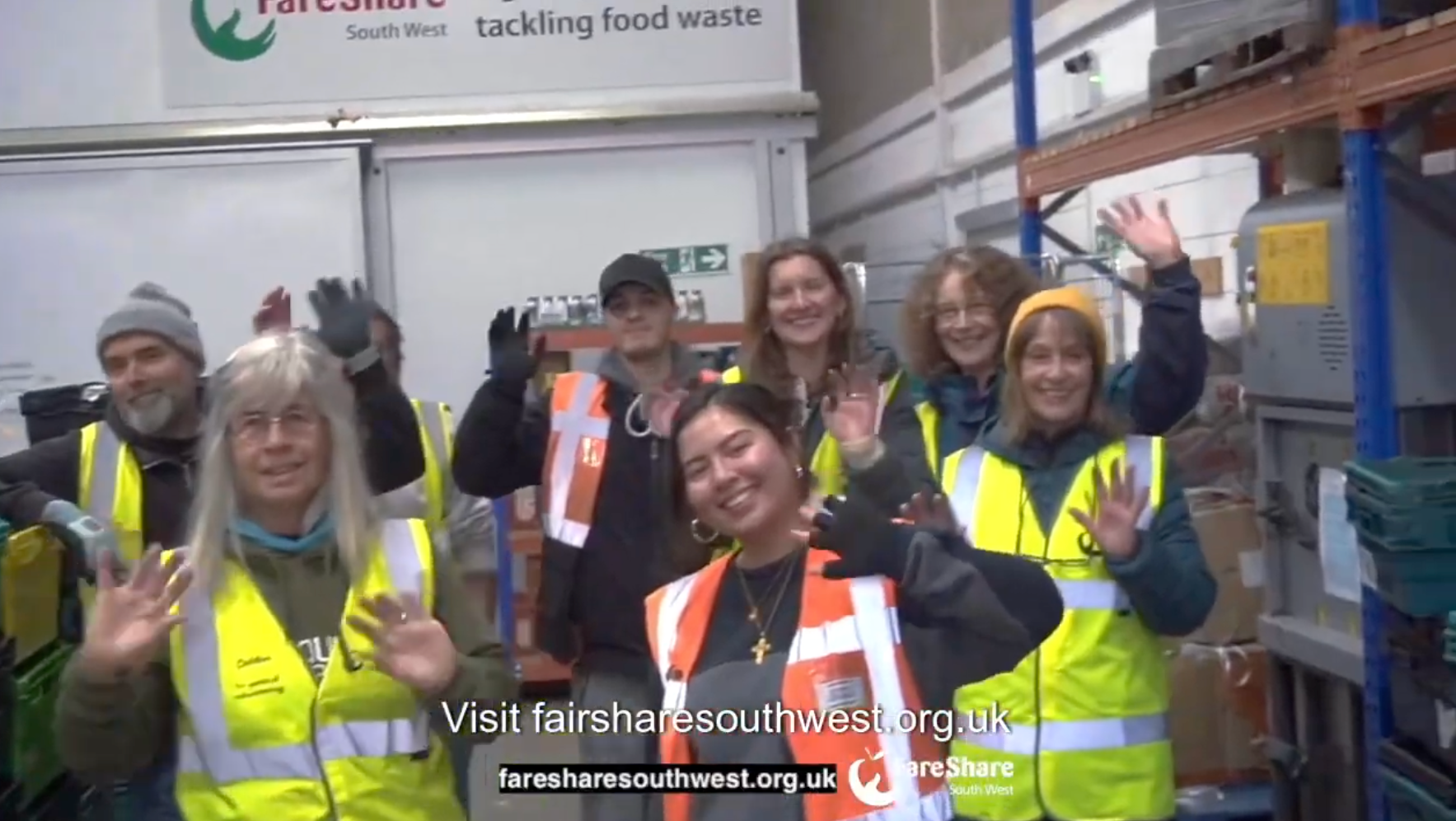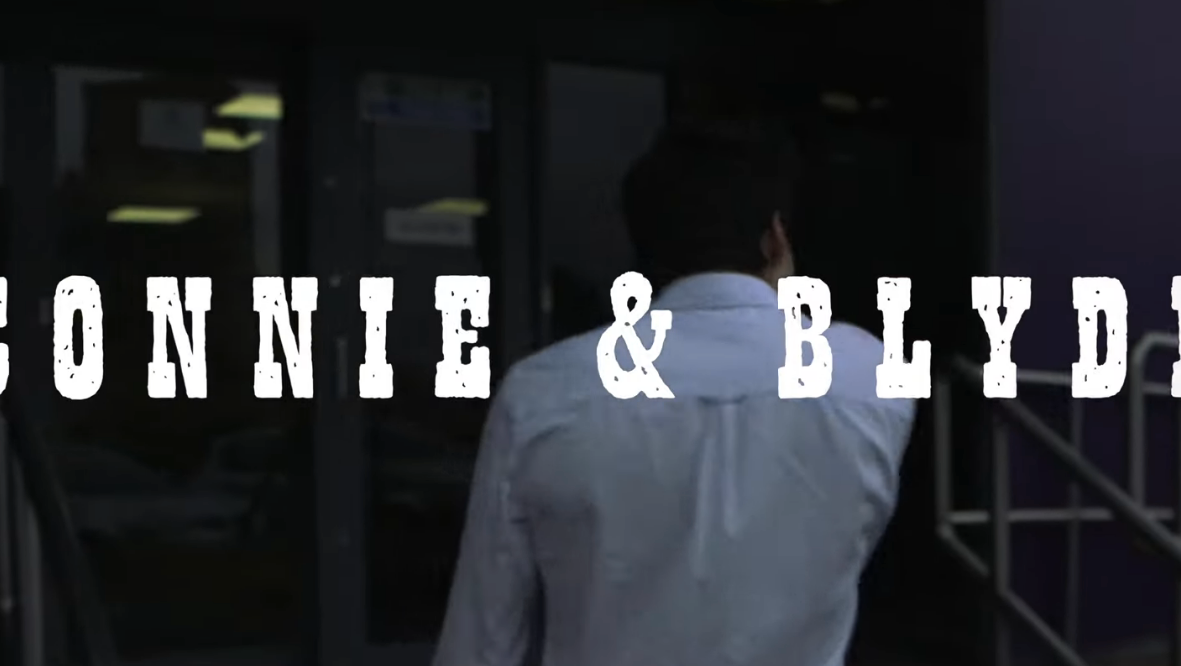For my experiment module, we chose to do a music video. We did 3 experiments; camera and light, editing and narrative and locations.
Experimentation Creative Portfolio
Viduals Music Video
A few months ago, Sam and I were approached by a Bristol-based band called Viduals to make a music video for them. We knew we wanted to do this project for Experimentation and Forms, so we got a team together for this music video. Our team consisted of me writing and directing, Lewis Jordan on camera, Sam Monaghan on lighting, and Harry King on edit. It was Lewis’s first time on camera, so I knew I would have to give him additional support. With this music video, we knew our audience would either be fans of the band themselves or the indie rock music genre. We planned out three experiments: camera and lighting, edit and colour grade, and narrative and locations. Whilst these seem broad, we narrowed them down in each experiment. With experiment 1, we all chose something to experiment with and decided we intended to engage the audience and create something with an indie rock vibe, similar to other music videos of the same genre. For me, it was the use of strobe lighting and low shutter speeds to create motion blur. For Sam, it was the use of a slider and colourful lighting. For Lewis, he was experimenting with how to use the camera, as this was his first time. Harry chose to be our subject. In experiment 2, I wanted to use editing techniques I had previously used throughout my A Level, such as cutting out frames and the ‘echo’ effect on Premiere Pro (as seen here). I wanted to continue with our first experiment's vibe and whether this would fit with the music or not. The third experiment was testing a part of the narrative with some locations and if it fit the song again. These experiments fundamentally reshaped my approach to filmmaking. Initially, I viewed lighting as a purely aesthetic tool, but I now recognise its narrative power, how strobe lighting and slow shutter speeds can evoke disorientation, enhancing emotional depth. This realisation has deepened my creative vision and expanded my technical skill set. The strobe lighting and low shutter speed were initially intended to create an indie rock aesthetic, but we found they also introduced a sense of disorientation that enhanced the song’s themes of longing. This unexpected effect led us to rethink how we framed certain shots, ultimately making our final concept more immersive.
I researched many music videos and their techniques. The music video genre would be very hard to subvert, as there are very few genre conventions as each music video could have any style, so I researched many different techniques to create a new approach to the music video genre. With the module being titled “experimentation,” I decided that my definition of experimentation would be to use old techniques in a new way, such as how Tarantino made Pulp Fiction. I then researched many books and journals sourced through Google Scholar and Discovery.
One journal I read stated that music videos often lack traditional narratives, instead relying on fragmented, dreamlike sequences that evoke emotions rather than tell a linear story (Aufderheide, 1986). I debated the validity of this source as through my research into music videos of the indie rock genre, I found most music videos were performance-based. The source is also almost 30 years old, and music videos are forever evolving. Whilst this was the case in the 80s, it may not be the case now. However, this technique helped me decide to incorporate a surreal narrative into the music video as a way to subvert traditional music videos.
The next article I read stated that music videos incorporate intertextual elements, blending references from film, literature, and visual arts (Jirsa & Korsgaard, 2019). I knew I wanted to include some sort of mythology reference within the narrative, so I researched Greek mythology and stumbled across the story of Ares and Aphrodite. Aphrodite cheated on her husband Hephaestus with Ares, who then caught them and trapped them in a net where they could never touch each other again, no matter how close they got. I listened to the song, which has themes of longing and loneliness, and devised a narrative about a guy chasing his past lover but never being able to reach her.
The final journal I read before starting the pre-production process suggested that music videos break away from conventional cinematic structures, based on Steven Shaviro’s concept of (post-)cinematic affect (Korsgaard, 2012). Shaviro states that digital media has taken over as the dominant cultural medium, and this has changed how people view the world (Shaviro, 2010). Shaviro argues that digital media has reshaped our perception, encouraging fragmented, non-linear narratives. However, Vernallis (2014) counters this, noting that music videos still often rely on traditional performance structures. My approach blends these perspectives, using digital effects and abstract editing to challenge conventional narrative structures while maintaining a performance element to retain audience engagement.
I then created a document of different music videos from the indie rock genre and my favourite techniques that they used, linking back to my idea of experimentation being using previously existing techniques in a new way. Jackie Down the Line by Fontaines D.C., Teal by Wunderhorse, Better Way to Live by KNEECAP and Starburster by Fontaines D.C. were the videos I took the majority of my inspirations from. In my research, I noted that many indie rock music videos, such as Fontaines D.C.’s Starburster, rely on abstract, surreal narratives. However, these often maintain a clear performance element. To push this further, I decided to experiment with blending narrative and performance in a way that disrupts traditional linear storytelling. This aligns with Korsgaard’s notion of post-cinematic affect, where digital media blurs the boundaries between fiction and reality. I focused on all the elements of film, not just the narrative side of it. With both of Fontaines’ music videos, I particularly liked the abstractness and the weirdness of the narrative. I looked up a couple of articles on their music videos to see how critically acclaimed these were, as the narrative was unconventional. Most of the articles compared Starburster to the music video that followed it, Favourite, a more conventional music video featuring videos of the band members when they were young. One stated that Starburster was, quite frankly, bonkers and unfathomable (Mason, 2024). Knowing that narratives like these were not critically acclaimed, I chose to go with an abstract narrative. I knew that the audience would still watch no matter what, as they are fans of the band. With KNEECAP, I liked the idea of the chorus being on a TV seen in the background of a lot of the shots in the pub, and toyed with the idea of including metatextuality in the music video. In the Teal music video, Wunderhorse play with different lighting, particularly red and blue lights, and also contrasts between regular motion and slow motion. I also looked at many other music videos for the performance aspect, such as Reptilia by The Strokes, and noted down the shot types and lighting that intrigued me.
Without this in-depth research into music videos and the theory behind them, I would not have had much idea how to create my indie rock video.
We pitched our idea to our peers on the 27th of January. Sam and I worked on the pitch together and devised our experiments. We used our experiments as an umbrella term, with having many little experiments in one big one.
Our first experiment was our camera and lighting experiment. We decided that our intention for this experiment was to create disorientation within the audience and to create a 90s grungy vibe. As previously mentioned, we all had some sort of idea of what we each individually wanted to experiment. We focused on the model of camera that we were using, and I wanted to test out if using two different brands of cameras would look different and whether this would look intentional or not. We used my Canon M50 MKii and the Blackmagic Pocket Cinema 4K for this shoot and found out that there was no difference between the two. I also wanted to test out different shutter speeds, specifically 1/8, 1/30 and 1/50, to achieve a grunge-inspired disorienting effect. While 1/8 produced an intense motion blur that enhanced the visual chaos, it also obscured facial expressions, reducing emotional clarity. This aligns with Bordwell’s (2006) discussion on the trade-offs between stylisation and viewer comprehension. To balance the aesthetic with the storytelling, we incorporated controlled strobe lighting, taking inspiration from Reptilia (The Strokes, 2003), where flickering lights are used to match the song’s rhythmic structure. This iterative approach refined our visual identity, ensuring that experimental elements served the narrative rather than overwhelming it. Sam wanted to test the slider specifically to pan between both band members. However, we did not have the proper stand for this. We added a projector in the background, projecting black and white psychedellic visuals, and whilst tricky to light and keep the shadow of the camera invisible, it worked well with our intention. Harry then edited this all together, but the edit included none of the low shutter speed shots, the song we were using or shots from the slider, and we did not see the edit until the morning of the screening. We screened this to our peers and got a mix of positive feedback and stuff to improve on. However, this feedback could have been more useful to us if the edit had included the shots we wanted to test. The main feedback from the audience was that they had no idea if the shots had worked with the music, so we made a note to include this in our next experiment. The audience said that the shots were engaging and had the grungy vibe we were hoping to achieve. For our next experiment, we knew to include the track and the shots we wanted to test out. This experiment will help us with our forms project as we now know the specific vibe we want to base our music video on and how to shoot and light the music video to achieve it.
Our second experiment was originally going to be a narrative test. I had written down a basic idea of the narrative, along with notes for the camera based on previous feedback, as we were going to reshoot our camera test too because I was unhappy with it. My idea for the narrative was to open with a home video of the woman (which I knew we would have to test at a later date because I did not have my cam recorder), show the protagonist depressed, and then have a chase sequence, finishing in an empty pub and a laundrette. On the day of the shoot, Harry let us know that he was unable to make it, which disappointed us, so we asked around if anyone was available in the evening, but no one was. We still set out to do the narrative shoot; however, we found this tricky because we needed a minimum of two actors, and there were only three of us. Instead, we decided to change this to an editing experiment, specifically testing frame rates and the ‘echo’ effect. Our intentions for this were to create a jagged, grunge effect to fit with the song and the previously recorded camera test. Sam, Lewis and I sat down together and played around with effects in Premiere Pro, trying to reach our intention. Drawing from Shaviro’s theory on post-cinematic affect, we explored frame rate manipulation and the echo effect to create an unsettling, fragmented aesthetic. After messing around with creating a bloom effect, the frames per second and trying new effects I had never seen before, we decided that we hit our intention and were happy to show this in the screening. The feedback we received in the screening was very positive, with people saying that the music worked very well with the style we were aiming for. Feedback suggested that greater synchronisation with the beat would heighten viewer immersion. This aligns with Vernallis’ notion that music videos function as ‘machines for generating affect’ through audiovisual synchronisation. Moving forward, we will refine rhythmic cutting techniques to enhance emotional engagement. The audience liked the ‘trippy’ and ‘jagged’ effects that I had edited, and the playing with the frame rates worked well with the visuals. I believe that this experiment was the most helpful to our forms project because the edit will make or break the music video. I know what to implement in the edit, and I know what to shoot and how to shoot it to stick with the '90s grunge intentions.
For the third experiment, we finally tested out the narrative and our locations. After the failure of the last narrative shoot, we made sure that Harry was going to be there and got Sam Moores to come and help us on the shoot. Our intention for this edit was to see whether the locations worked with the narrative and whether the narrative worked with the song. Before this, Sam and Lewis went out on a location scout and found locations that matched with the previous document I had given them. They found an underpass by the Old Market roundabout, an alley by Corn Street, and a car park for the final scene, however, we chose to shoot in Harbourside for this instead. After seeing photos of the locations, I decided that these were perfect for the music video. The underpass, with its harsh artificial lighting and enclosed space, evoked a sense of entrapment, aligning with the theme of longing in the song’s lyrics. In contrast, the Harbourside introduced water reflections, adding an ethereal quality to key moments. By integrating these elements, we ensured that the setting functioned not just as a backdrop but as an active narrative force. The shoot went very well, and we managed to test out new techniques in the location, for example, the flickering light in the alley and a tracking shot of Harry running. This was very interesting to film, as we would have to do lots of match cuts based off the script, so we made sure to find spots in the locations that would allow us to do this. For the edit, we tried to add the ‘glitch’ effect, but this was unsuccessful. Before the forms module, I will try to figure out how to do this with the test footage. I added screenshots from the script into the edit so I could ask for feedback on whether the shots and locations conveyed the idea I was trying to get across. Some feedback we received from our peers was that the locations worked well with the song and could be utilised to portray the narrative. Some of the shots in the darkness, specifically the tracking of Harry running, had visibility issues. Next time, we will make sure to take more than one light on the shoot so the scene is better lit. The audience wanted clear connections between the narrative and the performance, which we will do in forms because the protagonist will be the lead singer. The audience also wanted the edit techniques from the previous test to continue into the narrative side, which will also help with the connection between the two. For forms, we will utilise this feedback. I have many more ideas for the narrative, which will also help make it weirder and more abstract, like my inspirations.
Overall, this module has helped me develop my music video. The three separate screenings provided my group with lots of feedback, which we will use in our planning for forms. I want to do more research into writing and directing music videos and study the work of Marcus Prouse and Hugh Mulhern, who are two big indie music video directors. I want to make the project weirder, and since the narrative test, I have come up with many ideas on how to do this. Our next steps would be to do more test shoots, testing the rest of the narrative, more editing techniques and more camera techniques, preferably with the full band.
BIBLIOGRAPHY
Aufderheide, P. (1986). Music Videos: The Look of the Sound. Journal of Communication, 36(1), 57–78. https://doi.org/10.1111/j.1460-2466.1986.tb03039.x
Bordwell, D. (2006). The way Hollywood tells it: story and style in modern movies. Berkeley: University Of California Press.
Fontaines D.C. (2022, January 11). Fontaines D.C. - Jackie Down The Line (Official video). Retrieved from www.youtube.com website: https://www.youtube.com/watch?v=3AoOfJP3r40
Fontaines D.C. (2024, April 17). Fontaines D.C. - Starburster (Official Video). Retrieved from www.youtube.com website: https://www.youtube.com/watch?v=KHocVRUlvkk
Fontaines D.C. (2024, June 18). Fontaines D.C. - Favourite (Official Video). Retrieved from YouTube website: https://www.youtube.com/watch?v=0a_vpigwDb4
Jirsa, T., & Korsgaard, M. B. (2019). The Music Video in Transformation: Notes on a Hybrid Audiovisual Configuration. Music, Sound, and the Moving Image, 13(2), 111–122. Retrieved from https://muse.jhu.edu/article/749745
KNEECAP. (2023, November 15). KNEECAP feat. GRIAN CHATTEN - BETTER WAY TO LIVE (OFFICIAL MUSIC VIDEO). Retrieved February 20, 2025, from YouTube: https://www.youtube.com/watch?v=KSnF7RaeoXE
Korsgaard, M. B. (2012). Creation and erasure: music video as a signaletic form of practice. Journal of Aesthetics & Culture, 4(1), 18151. https://doi.org/10.3402/jac.v4i0.18151
Mason, J. (2024). [Review of Video of the Week #284: Fontaines D.C. – Favourite]. God Is in the TV. Retrieved from https://www.godisinthetvzine.co.uk/2024/06/26/video-of-the-week-284-fontaines-d-c-favourite/
Shaviro, S. (2010). Post-cinematic affect. Winchester; Washington: O Books.
The Strokes. (2009). The Strokes - Reptilia (Official Music Video). Retrieved from https://www.youtube.com/watch?v=b8-tXG8KrWs
Vernallis, C. (2004). Experiencing Music Video: Aesthetics and Cultural Context. New York: Columbia University Press, Cop.
Vernallis, C. (2014). Unruly media: YouTube, music video, and the new digital cinema. New York: Oxford University Press Inc.
Wunderhorse. (2021, July 26). WUNDERHORSE - TEAL. Retrieved December 18, 2024, from YouTube: https://www.youtube.com/watch?v=RvyXV-rYA2o
